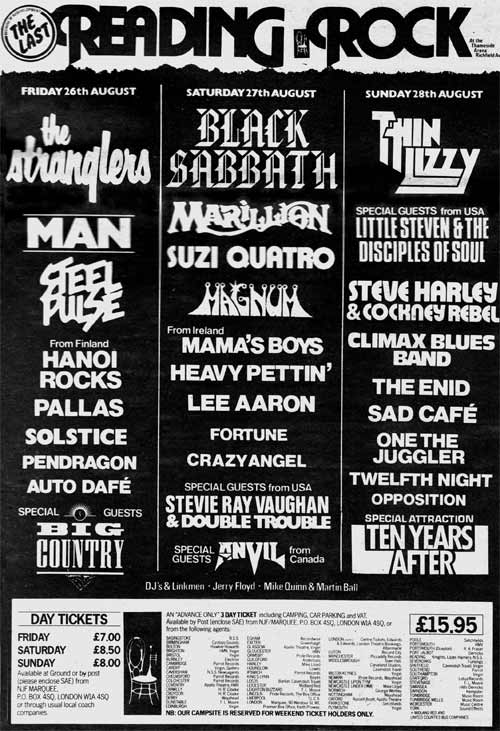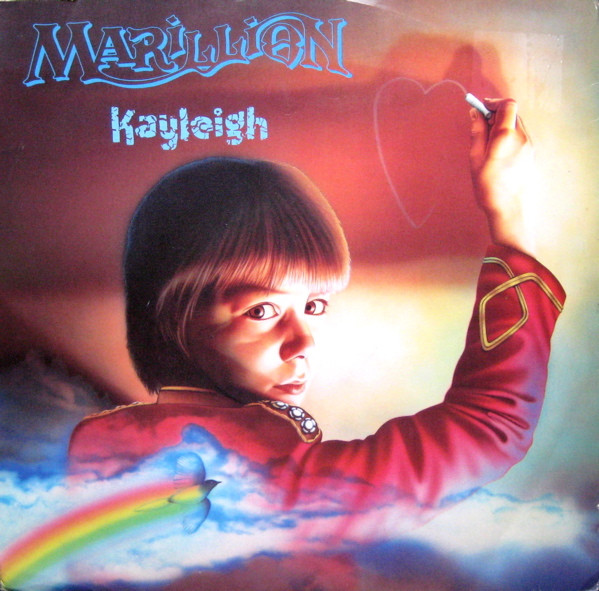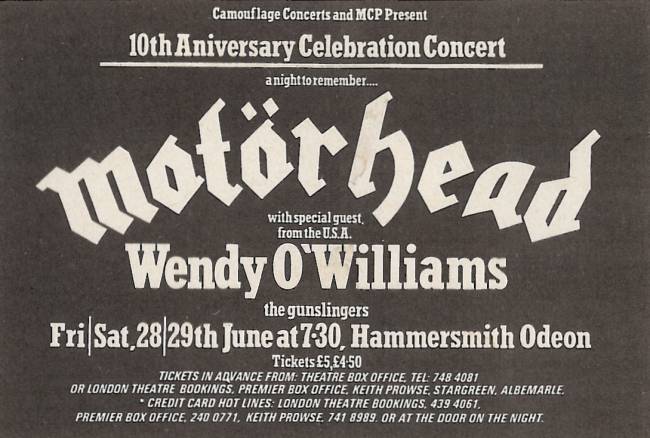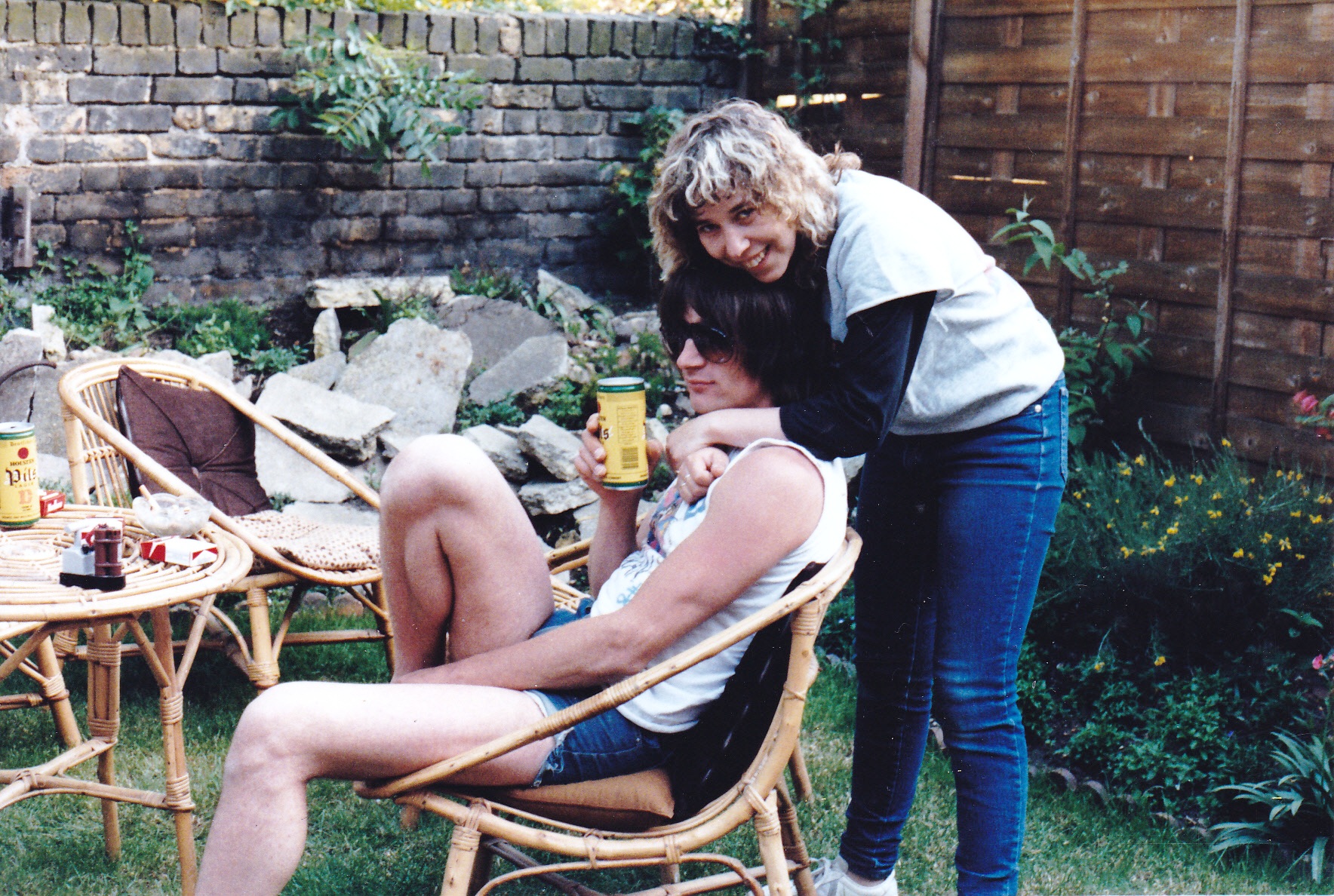Article 41: Life Songs No. 1
Sometimes in life, a song connects with you in more ways than one and stays with you until you die.
人生と共にある曲 No.1
人生において、ある曲が様々な形で自分と繋がり、死ぬ瞬間まで心に残ることがある。
On 30th November 1979, Pink Floyd released The Wall. A double album based around Roger Waters’ own experiences of abandonment and isolation and the single taken from it, Another Brick In The Wall Pt 2, not only surprised many people when it charted but also held the coveted ‘Christmas No.1’ slot in the UK. It was a milestone for Progressive Rock and a snub to all of its critics but the reality was, Prog Rock had been dying in the UK for the last three years and as the new decade emerged, would seem to be passing into the history books. By 1983, most of the dinosaurs had become extinct, overtaken in popularity by Punk and the New Romantics or simply by moving into a different market. Rick Wakeman had left Yes and the band had let Trevor Horn’s production overshadow their music on 90125; Genesis were being booed offstage while trying to promote their art-rock album Abacab and then reinvented themselves by turning to Pop with the self-titled album Genesis. Meanwhile, Floyd had imploded when his fellow band mates and record label threatened to sue Roger Waters and the big hope for Prog had turned out to be a let-down for the enthusiasts when members of ELP, Yes and King Crimson released their debut album, Asia. It was a great album, sold millions but it was commercial AOR, not Prog.
1979年11月30日、ピンク・フロイドは『The Wall』をリリースした。ロジャー・ウォーターズ自身の、捨てられたり、孤立したりした経験を基に制作された2枚組アルバムで、そこからのシングル「Another Brick In The Wall Pt 2」は、チャートインして多くの人を驚かせただけでなく、イギリスで切望されていた「クリスマスNo.1」枠をキープしたのである。プログレッシブ・ロックにとって画期的な出来事であり、批評家たちを唸らせたが、現実にはプログレ・ロックはこの3年間というもの、英国では衰退し続け、新しい10年が始まるに当たっては、歴史の教科書に載ってしまうような存在になっていた。1983年には、パンクやニューロマンティックに人気を奪われ、あるいは単に別のマーケットに移動して、ほとんどの「恐竜」は絶滅していた。リック・ウェイクマンがイエスを脱退し、バンドはトレヴァー・ホーンのプロデュースによりリリースした『90125』によって、彼ら本来の音楽の影を潜めてしまった。ジェネシスは、アートロック・アルバム『Abacab』のプロモーションをしようとして一般大衆からブーイングを受け、セルフ・タイトルのアルバム『Genesis』でポップに転身して再起を図ったのだった。一方、フロイドはバンド仲間とレコード会社がロジャー・ウォーターズを訴えると脅して崩壊し、プログレへの大きな希望は、ELP、イエス、キング・クリムゾンのメンバーたちがデビューアルバム『Asia』を発表して、マニアたちを失望させることに帰結してしまったのだった。このアルバムは素晴らしいアルバムで、何百万枚も売れたが、それは商業的なAORであってプログレではなかった。
However, at the same time as Floyd were recording The Wall, a new band from the small market town of Aylesbury in England were forming and it was they who would single-handedly bring back to life the UK Prog Rock scene a few years later. Marillion were all Prog Rock enthusiasts and refused to believe that the genre was dead and after recording a demo that found its way to the BBC’s Friday Rock Show, were invited to perform on it. That led to a contract with EMI and their first record, a single called Market Square Heroes, was released in 1982. Produced by David Hitchcock who had also produced Genesis’ Foxtrot album, the B-Side was a 17:15 epic akin to Supper’s Ready and with lead singer Fish wearing make-up on stage and acting out characters, the Genesis comparison was obvious. The media jumped on it, declaring Marillion to be nothing more than a Genesis copy band but it sold reasonably well and Prog fans liked it.
しかし、フロイドが『The Wall』をレコーディングしていた同じ頃、イギリスの小さな市場町アイレスベリーで新しいバンドが結成され、数年後にUKプログレシーンを一挙に復活させることになったのである。マリリオンはプログレの大ファンで、このジャンルが死んだと信じて疑わず、デモを録音した後、BBCのフライデー・ロック・ショーに招かれ、出演することになった。それがきっかけでEMIと契約し、1982年に最初のレコード「Market Square Heroes」というシングルをリリースした。ジェネシスのアルバム『Foxtrot』をプロデュースしたデヴィッド・ヒッチコックがプロデュースしたB面は、「Supper’s Ready」に似た17分15秒の大作で、リードボーカルのフィッシュはステージ上でメイクアップしたキャラクターを演じており、ジェネシスとの比較は明らかであった。マスコミはこれに飛びつき、マリリオンはジェネシスのコピーバンドに過ぎないと断じたものの、それなりに売れたし、プログレファンにも好評だった。
In those days, a record company invested in a band. The normal record contract from a major label would be for five albums and the label supported the band financially until such time as the promotion and marketing would make the band profitable. The first album required heavy investment by the record company and providing sales were adequate and the label could see the band’s profile building, they would be happy to proceed with a second album and advance the band more money. This, EMI did with Marillion when their first album, Script For A Jester’s Tear, was released in March 1983 and peaked at No. 7 in the UK. Fugazi, the second album, was released in March 1984 but the recording was fraught with problems as they went through a succession of drummers and the producer Nick Tauber wasn’t suitable for the band’s music. The resulting record sounded too polished and the song writing was sub-par in places. It charted at No. 5 but sold less than its predecessor and it was now make-or-break time for EMI. This again was normal for bands signed to major labels back then; record companies looked at the third album as the one where the investment paid off and if it didn’t, the band would be dropped.
当時は、レコード会社がバンドに出資していた。メジャーレーベルのレコード契約は通常アルバム5枚で、プロモーションやマーケティングでバンドが利益を上げるまで、レーベルが経済的にサポートするというものだった。1枚目のアルバムは、レコード会社が多額の資金を投じて制作したもので、売れ行きがよく、バンドの知名度が上がれば、喜んで2枚目のアルバムを制作し、さらに資金を提供するというものであった。1983年3月にリリースされたマリリオンのファースト・アルバム『Script For A Jester's Tear』は全英7位を記録し、この時はEMIがマリリオンに出資した。1984年3月に2ndアルバム『Fugazi』をリリースするが、レコーディングではドラマーが次々と交代したり、プロデューサーのニック・タウバーがバンドの音楽に合わなかったりと、問題が山積していた。その結果、レコードは洗練され過ぎたサウンドになり、ソングライティングもところどころで劣るようになった。5位にチャートインしたものの、前作よりも売り上げが少なく、EMIにとっては、もはや一か八かの勝負の時期であった。これもまた、当時のメジャーレーベルと契約していたバンドにとっては普通のことだったのだが......。レコード会社は、3枚目のアルバムで投資が報われることを望み、もしそれが叶わなければバンドを見捨てるつもりだった。

Photo 01 音楽的に楽しい一日を過ごすには、これをチェックしてください。1983年のレディング・ロックで、マリリオンはブラック・サバス、スージー・クワトロ、スティーヴィー・レイ・ヴォーンらと共演したのだ。
Photo 01 Check this for a music ally diverse good day out. I was at Reading Rock 1983 when Marillion played with, amongst others, Black Sabbath, Suzi Quatro and Stevie Ray Vaughan.
A steady stream of top 30 singles had kept Marillion floating comfortably on EMI’s bank balance but it was now time to come up with the record that would take them into the major league. Fish had by now become addicted to the Rock and Roll lifestyle and after finishing the tour to promote Fugazi, came home to an empty house where he started to find himself very alone and not willing to face the realities and responsibilities of the real world. Fish picks up the story from the liner notes written on the re-mastered CD released in 1996 (abridged notes):
An envelope arrived one day. Inside there was a short letter from an old girlfriend with the recommendation to digest the accompanying contents - a tab of very strong acid. Not having indulged for a while I swallowed a cautious half, and after a few hours and with a pleasant euphoria, I took the other half. I started to doodle and scribble in my lyric book on the off chance of catching something from the trip. It was sometime during the night that I was visited. I felt a child standing behind me on the stairs. I knew he was dressed as a soldier and vanished as soon as he entered the corner or my eye. Perhaps it was my muse; perhaps it was the drug. It was enough to propel me into reaming off a large scrawl of prose. Contained within were the diamonds and structure on which would hang up the entire concept of Misplaced Childhood.
トップ30のシングルを次々とリリースし、マリリオンはEMIの銀行口座に安住していたが、そろそろメジャーリーグに進出するためのレコードを作る時期が来ていた。フィッシュはこの頃、ロックンロールライフにのめりこんでいた。『Fugazi』のプロモーションのためのツアーを終え、誰もいない家に帰った彼は、孤独であることに気付き始め、現実の世界とその責任を負うことを望まなかった。1996年に発売されたリマスターCDに書かれたライナーノーツ(抄訳)から、フィッシュが話を拾っている。
ある日、1通の封筒が届いた。中には、昔の恋人からの短い手紙と、その中に入っていた非常に強い錠剤を一錠飲むようにとの勧告が入っていた。それにしばらくは手を出さずにいた私は、慎重に半分を飲み込み、数時間後、心地よい幸福感とともに、残りの半分を飲んだ。私は、このトリップで何か摑めないかと思い、歌詞帳に何でも思いつくまま書きなぐった。事が起こったのは、夜になってからだった。私の後ろの階段に子供が立っているのを感じた。この子が兵士の格好をしているのは分かったが、それが目の端に入った途端に消えてしまった。ミューズのせいか、薬のせいか。それだけで私は、大きな散文を書き残すことができた。その中には、『Misplaced Childhood』のコンセプトを構成する珠玉のストーリーが含まれていたのだ。
Fish’s trip lasted ten hours and when the band met up for rehearsals to write the next album, the music the band had written and Fish’s ideas for songs naturally formed themselves into a concept album. Guitarist Steve Rothery in the meantime had had a lucky accident. Again, from the 1996 re-issue liner notes he writes:
My wife to be, Jo, asked me to explain how I came up with my musical ideas. Picking up a nearby guitar I started improvising what later became the 'Kayleigh' riff whilst explaining that I tried to combine melody and rhythm.
フィッシュのトリップは10時間に及び、次のアルバムを作るためのリハーサルのためにバンドが集まった時、バンドが書いた音楽とフィッシュの曲のアイデアが自然にコンセプト・アルバムとして結実した。その頃、ギタリストのスティーブ・ロザリーは、幸運なアクシデントに遭っていた。1996年の再発盤のライナーノーツから再び引用しよう。彼はこう書いている。
妻のジョーが、「どうやって音楽のアイデアを思いつくの?」と訊いてきた。私は近くにあったギターを手に取り、メロディとリズムを組み合わせるようにするんだと説明しながら、後に「Kayleigh」となるリフを即興で弾き始めたのだ。
Once the demos were recorded, they gave the tapes to EMI who looked at the band aghast when they told them it was a concept album because at that time, early 1985, the charts were filled with Wham!, Madonna, Howard Jones and Frankie Goes To Hollywood; Rock music, let alone Progressive Rock music, didn’t stand a chance. The band insisted this was the way to go though and set off in March for Hansa Studios in Berlin where Bowie had recorded Heroes along with producer Chris Kimsey to record the album. The result was a stunning blend of Progressive Rock, Rock and commercial songs linked with stanzas; the first side being based around Fish’s ex-girlfriend, Kay Lee and his inability to form another relationship because of her whilst side 2 was about drugs, alcoholism and the darker side of his life. Taken as a whole the album flowed as one piece of music but several songs lent themselves to be singles in their own right, just as Another Brick In The Wall Pt 2 had been for Floyd and EMI decided to release an edited version of Kayleigh. Thirty seconds were cut from the guitar solo and Kimsey added some effects to make it sound better on smaller speakers. I was released on 7th May before the album was finished. Everybody was quietly optimistic but no one was really prepared for what happened next. Kayleigh entered at No. 15 – their highest position to date in the singles charts and peaked at No. 2, only being held off the No.1 spot by the charity record, You’ll Never Walk Alone by The Crowd in aid of the victims of the Bradford Stadium fire disaster.
デモを録音した後、EMIにテープを渡したが、コンセプト・アルバムだと言うと、彼らは愕然とした顔をした。当時、1985年初頭のチャートには、ワム!、マドンナ、ハワード・ジョーンズ、フランキー・ゴーズ・トゥ・ハリウッドが並んでいたからだ。ロックはもちろんのこと、プログレッシブ・ロックも勝ち目はなかった。しかし、バンドはこの方法しかないと主張し、3月にボウイが『Heroes』を録音したベルリンのハンザ・スタジオに、プロデューサーのクリス・キムジーと共にアルバムのレコーディングをするために出発したのだった。そして、プログレッシブ・ロック、王道のロック、コマーシャル・ソングが一つに融合した見事な作品に仕上がったのである。A面はフィッシュの元カノ、ケイ・リーを中心に、彼女のせいで次の関係を築けなかったこと、B面はドラッグ、アルコール依存症と彼の人生の暗黒面について書かれている。アルバム全体としては1つの音楽として流れているが、フロイドの「Another Brick In The Wall Pt 2」のように、いくつかの曲はそれ自体でシングルになる可能性があり、EMIは「Kayleigh」を編集してリリースすることに決めた。ギターソロは30秒カットされ、キムジーは小さなスピーカーでも聴きやすいようにエフェクトを加えた。シングルはアルバムが完成する前の5月7日にリリースされた。誰もが静かに動向を楽観視していたが、次に何が起こるかは誰にも予期できなかった。「Kayleigh」はシングルチャートでこれまでの最高位となる15位に入り、2位まで上り詰めた。ブラッドフォード・スタジアム火災の被害者を支援するためのチャリティーレコード、The Crowdの「You'll Never Walk Alone」に阻まれての2位だった。

Photo 02 「Kayleigh」の7インチシングルのジャケット。私は12インチのピクチャーディスクも買った。
Photo 02 Kayleigh 7” single sleeve. I bought it as well as the 12” pic disc.
By June, Kayleigh was the most played record on British radio and was already climbing the charts in Holland, France and Germany. A promotional video was filmed while they were still in Hansa studios doing the final mix of the album showing the band playing in the studio and Fish meandering through the drab grey streets of Berlin, interspersed with an occasional glimpse of ‘Kayleigh’ and a young boy in a soldier’s jacket. In reality, the young boy was Robert Mead, the son of a local publican whose pub sleeve designer Mark Wilkinson used to frequent and decided to use for the artwork of both the single and album and Kayleigh was Tamara Nowy, the daughter of the owner of Hansa Studios who worked in the bar attached to it. Fish eventually married her.
6月には、「Kayleigh」はイギリスのラジオで最も多く流されたレコードとなり、オランダ、フランス、ドイツでも既にチャートを上昇していた。プロモーション・ビデオは、彼らがまだハンザ・スタジオでアルバムの最終ミックスを行っている間に撮影されたもので、スタジオで演奏するバンドと、ベルリンの殺風景な灰色の街を彷徨うフィッシュが、時々ちらりと見える「Kayleigh」と軍服を着た少年を織り交ぜて映されている。実はこの少年は、スリーブ・デザイナーのマーク・ウィルキンソンがよく通っていた地元のパブのオーナーの息子のロバート・ミードで、ウィルキンソンはシングルとアルバムのアートワークに使うことにした。そしてケイリーはハンザ・スタジオのオーナーの娘で、その併設バーで働いていたタマラ・ノヴィーである。フィッシュは最終的に彼女と結婚した。
The commercial success of Kayleigh led to a hugely successful album that hit No. 1 on 29th June 1985 and was top 10 in many other European markets; it even cracked the US Billboard chart peaking at No. 47. Misplaced Childhood brought Progressive Rock up to date and made it more accessible to average record buyer who preferred singles. In the UK, many other bands existing Prog bands such as Twelfth Night, IQ and Pallas started to draw greater audiences and new bands and sub-genres (Prog Metal, Nu Prog, etc) started to appear. After a five-year lull, Prog Rock was back.
「Kayleigh」の商業的成功は、1985年6月29日に1位を獲得し、他の多くのヨーロッパ市場でもトップ10に入るなど、大成功を収めた。全米ビルボードチャートでは、47位を記録した。『Misplaced Childhood』は、プログレッシブ・ロックを最新のものにし、シングルを好む一般のレコード購入者がよりアクセスしやすいものにした。イギリスでは、トゥウェルフス・ナイト、アイキュー、パラスといった既存のプログレバンドが多くの観客を集め始め、新しいバンドやサブジャンル(プログレ・メタル、ヌー・プログレなど)が登場し始めた。5年ぶりにプログレが復活したのである。
What does all this mean to me? Well, it was Sunday 23rd June, 1985. Denise from Girlschool invites me over to her place for dinner. Her boyfriend, Tim, is cooking a curry. I ate too much and my trousers were too tight and when I got back home, I was in agony with stomach cramps. I lay in a foetal position on my bed, a tape loop of Misplaced Childhood playing all night and at 9am, I managed to get to the doctor conveniently located across the road from where I lived. He told me to go straight to Charing Cross Hospital and when I arrived there, I was hurried onto a gurney, a doctor telling me an operating theatre was being prepared; suspected ruptured appendix and if it bursts before they could get to it, I could die. Tests were done, thankfully not a burst appendix but it was pancreatitis, no doubt being brought on by too much spicey food and alcohol. Utter rest and controlled diet for a week was the treatment and I was placed in a room on my own. Two intravenous drips were in my arm, just a radio and a nurse checking my condition every two hours for company.
このことは、私にとってどんな意味を持っていたか?まず、1985年6月23日(日)。ガールズスクールのデニスから夕食に誘われた。彼氏のティムがカレーを作っていた。食べ過ぎてズボンがきつくなり、家に帰ったら胃痙攣で悶絶していた。
ベッドに腹ばいになり、『Misplaced Childhood』のテープを一晩中流し続け、午前9時、自宅から道路を挟んだ便利な場所にある医者に何とか辿り着いた。医師からチャリングクロス病院に直行するように言われ、到着すると、私は担架に乗せられ、医師から手術の準備が進められていると告げられた。虫垂破裂の疑いがあり、もしその前に破裂したら死ぬかもしれなかった。検査をしてみると、幸いにも盲腸の破裂はなく、膵臓炎だった。1週間は完全な安静と食事制限の治療が行われることになり、私は一人部屋に入ることになった。腕には2本の点滴がされ、無線機と看護師が2時間おきに体調をチェックしてくれているだけだ。
I was sedated so I drifted in and out of sleep but it seemed whenever I woke up, Kayleigh was being played on the radio. I never tired of it and after five days I was released from the hospital.
鎮静剤を飲んでいたので、眠ったり起きたりを繰り返していたが、目が覚めるといつも「Kayleigh」がラジオからが流れているような気がした。

Photo 03 退院した日にモーターヘッドの10周年記念ライブを観に行った.
Photo 03 The day I was let out of the hospital, I went to see Motorhead’s 10th Anniversary gig.
A few years later, I was at the Townhouse Studios in London. It was a Saturday morning and I was in the lounge watching TV. The football show was on and I was interrupted by a Scottish voice bellowing ‘Take that rag off!’ I looked up, Fish was pointing at me and had an angry look on his face. I looked down to see I was wearing a Marillion T-shirt. ‘Just kidding’ he said and broke into a broad grin. We watched the football together after which he invited me into the studio to listen to a track from his new album. It was superb and I told him so. As I was leaving, I mentioned to him that I knew he hated Marillion now but that Kayleigh got me through a rough time in hospital and I was thankful for him writing it. ‘Oh I don’t hate Marillion’ he said, ‘just the people in the band.’ and cracked another of those wonderful grins.
それから数年後、私はロンドンのタウンハウススタジオにいた。土曜日の朝、私はラウンジでテレビを観ていた。サッカーの番組が始まったのだが、「その服を脱げ!」と怒鳴るスコットランド訛りの声で中断された。顔を上げると、フィッシュが私を指差して、怒った顔をしていた。ふと自分の格好を見ると、マリリオンのTシャツを着ている。「冗談だよ。」と言いながら、彼は破顔した。一緒にサッカーを観た後、彼は私をスタジオに招き、彼の新しいアルバムからの曲を聴かせてくれた。それは素晴らしいものだったので、私は彼にそう伝えた。帰り際、「君は今のマリリオンが好きじゃないだろうけど、僕は<Kayleigh>のおかげで入院中の辛い時期を乗り越えられたから、君がこの曲を書いてくれたことに感謝してるよ。」と伝えた。彼は「マリリオンは嫌いじゃないよ、バンドのメンバーが嫌いなだけだよ。」と言って、また素晴らしい笑みを浮かべたのだった。
I can’t listen to Kayleigh now without a smile and barrel of memories but the real legacy of this song is the name itself. Before Fish amalgamated Kay and Lee into Kayleigh, the name did not exist in that format. Just as J.J. Barrie invented the name Wendy for his book Peter Pan first published in 1904, so Fish created that spelling which has since gone on to be the 30th most popular name for a girl in Britain.
今や、「Kayleigh」はあの笑顔と数々の思い出なしには聴くことはできないものだが、この曲の本当の遺産は名前そのものだ。フィッシュが「ケイ(Kay)と「リー(Lee)」を統合して「ケイリー(Kayleigh)」にする以前は、そのような名称は存在しなかったのだ。J.J.バリーが1904年に出版した「ピーターパン」のためにウェンディという名前を考案したように、フィッシュもこのスペルを考案し、その後、英国で30番目に人気のある女の子の名前となったのである。

Photo 04 幸せな日々。裏庭でのティムとデニス。ティムはテイク・ザットのツアーのリハーサル中にP.A.スタックから落ちて悲劇的な死を遂げた。素敵な男性だった。
Photo 04 Happy days. Tim and Denise in their back garden.Tim died tragically after he fell off a P.A. stack during rehearsals for a Take That tour. He was a lovely man.
Copyright © 2023 Upp-tone music Co., Ltd. All Rights Reserved.